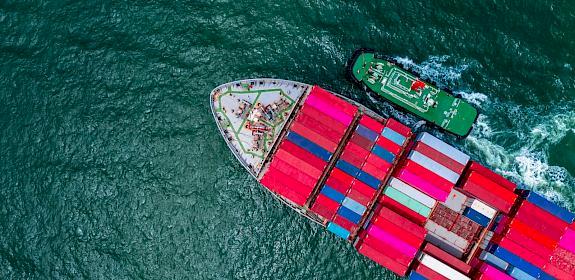Customs and police officers in Namibia receive port scanner training on wildlife contraband
Windhoek, Namibia, 3rd October 2019—Customs and Police officers from Windhoek and Walvis Bay last week received training in species identification and the use of baggage and container scanners to detect smuggled wildlife products. Air, sea and land ports in Namibia have been identified as key hubs for the distribution of illegal wildlife products. The Namibian government is committed to combating wildlife trade in the transport sector and agreed to partner in the training of 40 Customs and Excise Department and Namibian Police force officers based at Hosea Kutako International airport and Walvis Bay sea port.
This training was funded through the “Combatting Wildlife Trafficking in Namibia” project, funded by the Bureau of International Narcotics and Law Enforcement Affairs in the United States Department of State. The project is managed by the Namibia Nature Foundation. It is through this commitment that Namibia is in partnership with the United Nation’s Office of Drugs and Crime’s Container Programme Control (UNODC CCP), in an effort to implement better controls and sophisticated approaches to improving detection of illicit goods in containers going through Walvis Bay.
Last week’s training was led by TRAFFIC staff Adam Pires and Dominique Prinsloo whose participation was possible thanks to the USAID-funded “Combating Wildlife Crime in the Namibia and the Kavango Zambezi Area Project” (CWCP).
Engaging with the transportation sector and freight and aviation industries is important in the fight against wildlife crime and illegal trade, but equally important is ensuring that government law enforcement agencies have the necessary capacity to deal with illegal wildlife trade.
Miss Dominique Prinsloo, TRAFFIC’s Project Support Officer for the CWCP.
Topics covered during the week included an overview of legal and illegal wildlife trade, an introduction to the Convention on International Trade in Endangered Species of Wild Fauna and Flora (CITES), modes of transport and concealment of wildlife specimens, detection of wildlife specimens in baggage, cargo and container scanners, and identification of traffickers.

Experts on hand included Karen Nott of the Namibia Nature Foundation, who gave much needed insight into the timber trade and CITES permit system, Francois Theart, of Snakes of Namibia, and Bonnie Galloway, of Namibia Nature Foundation, who provided an introduction to the identification of commonly smuggled protected reptile species and protected succulents respectively.
Hands on experience was given in Windhoek with reptiles, plants (small succulent species and seeds), confiscated ivory and rhino horn, ivory bangles and eggs were sent through baggage and cargo scanners so that participants could gain a better understanding of how to look for organic products using different views and image analyses on these scanners. Participants were then tasked to conceal various wildlife contraband using different masking materials to attempt to prevent detection through the scanner.
In Walvis Bay, a truck full of packaged charcoal was used to conceal suitcases containing ivory, rhino horn and pangolin scales and sent through the container scanner. A four-wheel drive was also scanned with this luggage and participants were tasked with identifying the contraband from the different views that the scanner produced.
“This workshop was very much needed. When we received the invitation, we did not know what the workshop was about. When I attended the training, I realised that this (training on wildlife smuggling) is what we really needed,” said Ms Pamela Smith, Chief Customs and Excise Officer (Enforcement), Customs and Excise, Ministry of Finance.
“It was an honour to be part of this workshop. We need more of these types of workshops. We need to share information. I hope that from now that the co-operation between customs and police will increase,” said Barry de Klerk, Deputy Commissioner, Protected Resources Division, Nampol.
Additional materials used during the workshop were supplied through the USAID-funded “Reducing Opportunities for Unlawful Transport of Endangered Species” (ROUTES) Partnership and the “Wildlife Trafficking, Response, Assessment and Priority Setting” (Wildlife TRAPS) project.
TRAFFIC also thanks all the participants and organisers from the Namibian Police Force (Nampol) and the Protected Resources Division, the Ministry of Finance’s Department of Customs and Excise and the Ministry of Environment and Tourism’s Intelligence and Investigations Unit.
About CWCP
TRAFFIC’s “Combating Wildlife Crime in the Namibia and the Kavango Zambezi Area Project” (CWCP) is supported by USAID and aims to raise awareness of wildlife crime among customs officials at sea- and air- ports in Kavango Zambezi Area (KAZA) countries.





